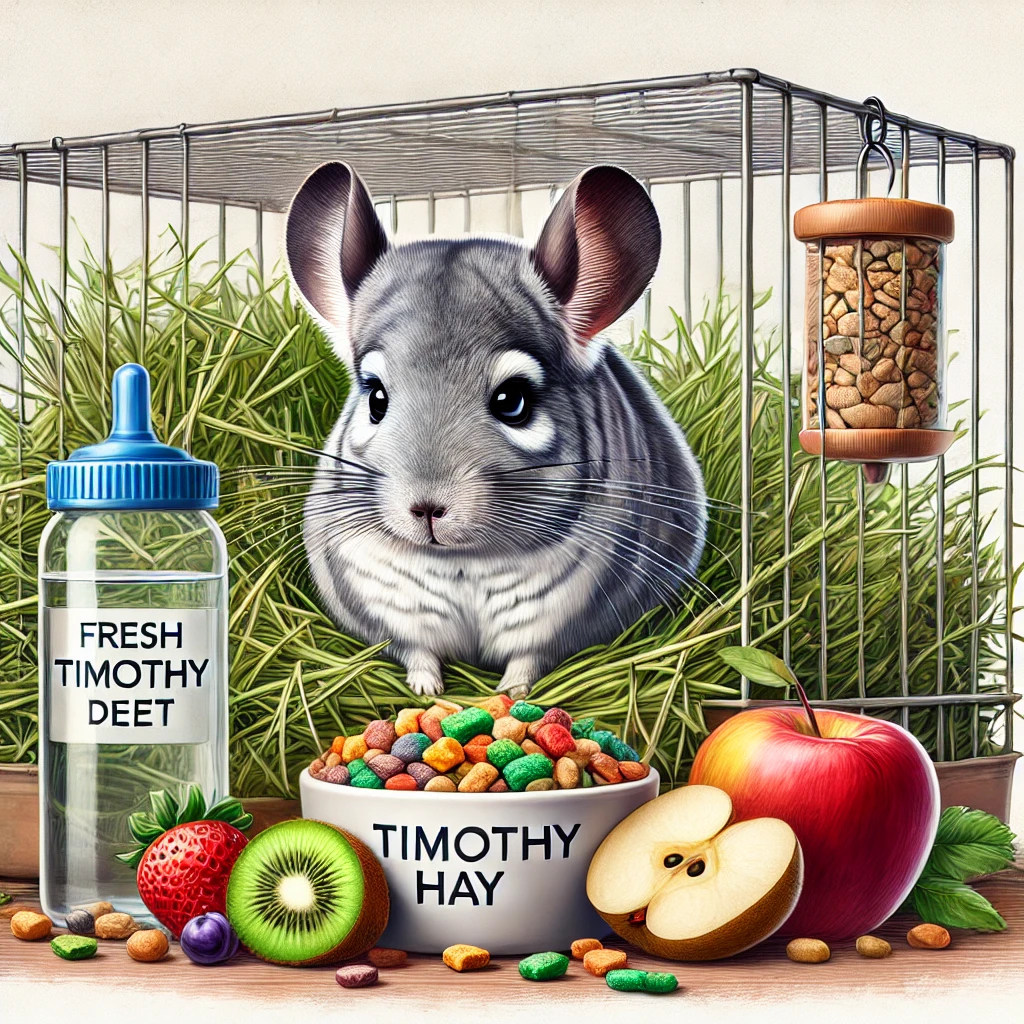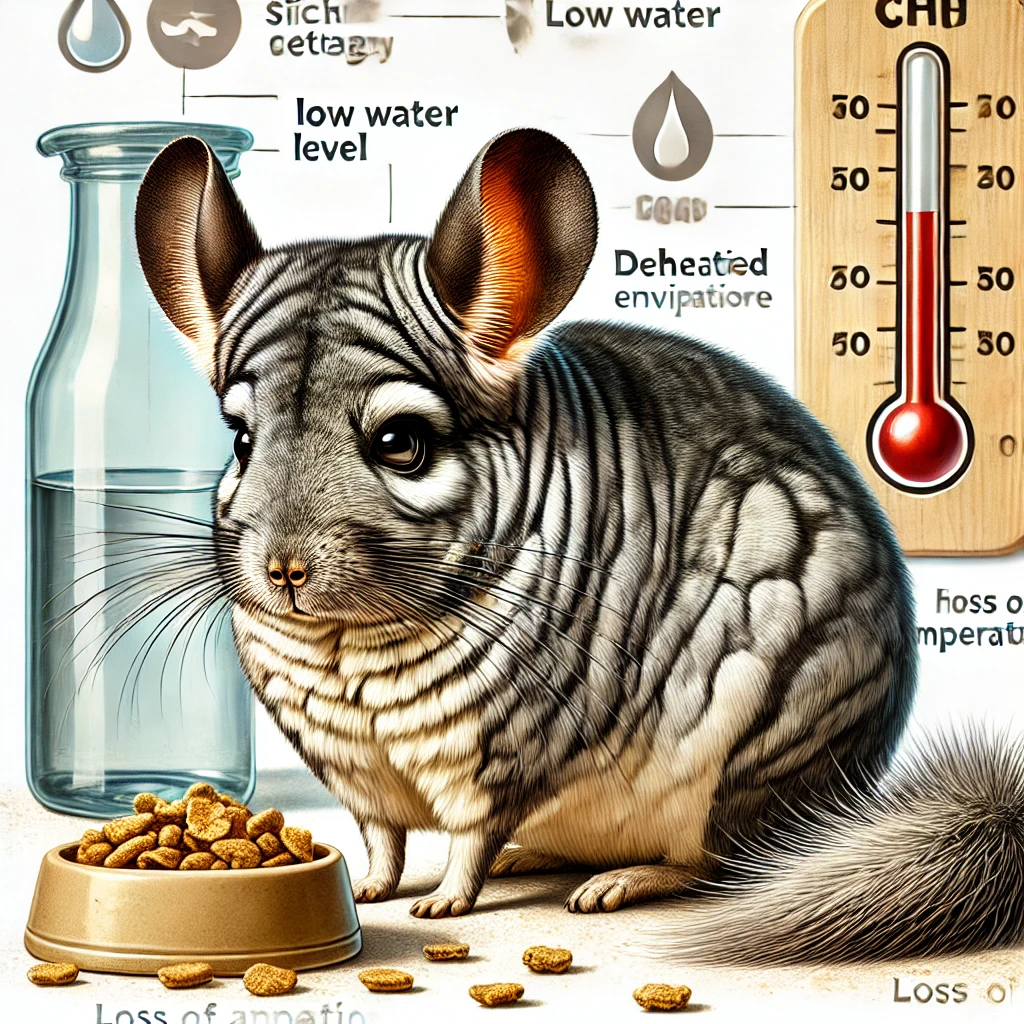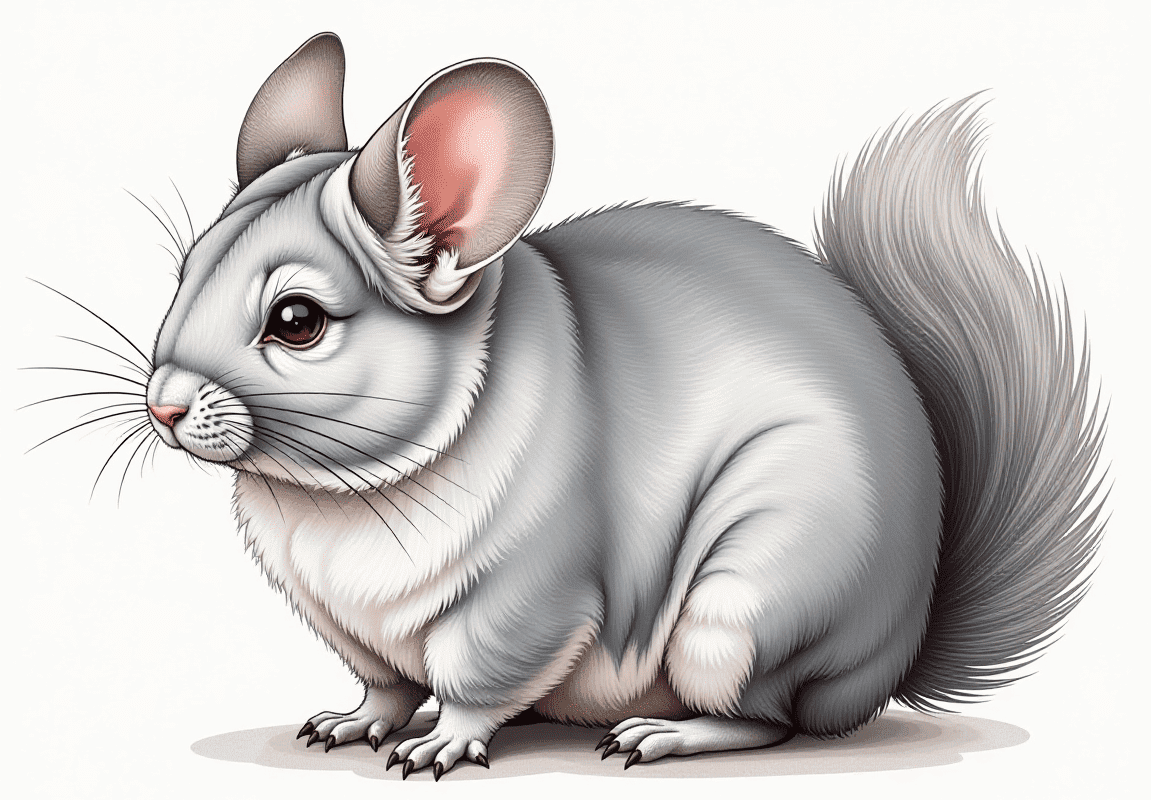Chinchillas: A Comprehensive Guide to Their Care, Diet, and Health
Introduction
Chinchillas are fascinating, high-energy pets known for their incredibly soft fur and playful personalities. However, despite their adorable appearance, caring for them requires a deep understanding of their needs. Many first-time owners make the mistake of assuming chinchillas are low-maintenance pets, leading to issues with diet, health, and overall well-being.
In this guide, we’ll break down everything you need to know about chinchillas, from their origins to their diet, common health concerns, and essential care tips. By the end, you’ll have a clear understanding of what it takes to provide a healthy, happy life for these unique animals.
Background: Understanding Chinchillas
Chinchillas originate from the Andes Mountains in South America, where they have adapted to harsh, rocky environments with extreme temperature variations. Their thick fur, which has the highest hair density of any land mammal, protects them from cold weather but also makes them susceptible to overheating in warm climates. Historically, chinchillas were hunted for their fur, which led to a dramatic decline in wild populations. Today, they are commonly bred in captivity for the pet trade, and responsible ownership is key to their welfare.
Domesticated chinchillas differ slightly from their wild counterparts in terms of behavior and diet but still require similar environmental conditions to thrive. They are crepuscular, meaning they are most active during dawn and dusk, and they live an average of 10-15 years with proper care. Chinchillas are social animals, often living in colonies in the wild. However, some individuals prefer solitude, and careful introductions are needed if you plan to keep more than one.
Habitat and Housing Needs
Creating the right environment for your chinchilla is essential for their overall well-being. Since chinchillas are active jumpers, their cage should be spacious and allow for climbing and movement.

A good chinchilla habitat should include:
- A Multi-Level Cage: Vertical space is just as important as floor space. A multi-level cage with platforms, ledges, and ramps encourages exercise and mimics their natural climbing instincts.
- Safe Flooring: Avoid wire-bottom cages, as they can cause foot injuries (bumblefoot). Solid flooring is preferable, with soft bedding such as kiln-dried pine shavings or fleece liners.
- Temperature Control: Since chinchillas are prone to overheating, their environment should be kept between 60-70°F (16-21°C). A cool, well-ventilated area away from direct sunlight is ideal.
- Hiding Spots and Enrichment: Providing hiding places, tunnels, and wooden chew toys prevents boredom and stress.
- Cleanliness: Chinchillas are clean animals, but their cages require regular maintenance. Weekly deep cleaning and daily spot-cleaning of soiled areas help maintain hygiene.
Diet: What Should Chinchillas Eat?
One of the most common mistakes owners make is feeding chinchillas an improper diet. Unlike other small pets, chinchillas have sensitive digestive systems that require specific nutrients to maintain their health.

1. High-Fiber Diet
- Hay should be the main component of their diet, particularly timothy hay, as it aids digestion and prevents dental issues.
- Pellets made specifically for chinchillas should be given in moderation. Avoid mixes with nuts, seeds, and dried fruits, as these can lead to obesity and digestive problems.
- Alfalfa hay can be offered occasionally but is too rich for everyday feeding in adult chinchillas.
2. Limited Treats
- Fresh fruits and vegetables are not ideal for chinchillas due to their high sugar content. If given, they should be rare and in tiny amounts.
- Safe treats include dried rose hips, plain shredded wheat, or small amounts of rolled oats.
- Too many treats can cause digestive upset, so they should only be given sparingly.
3. Fresh Water
- Chinchillas need access to clean, fresh water at all times. A water bottle is preferable to a dish, as it keeps the water free of debris.
- Water should be changed daily to prevent contamination.
Health Issues: Common Problems and Prevention
Chinchillas are generally hardy, but improper care can lead to serious health complications. Here are some common issues and how to prevent them:

1. Dental Problems
- Chinchilla teeth continuously grow throughout their lives. A lack of proper chewing material (like hay and chew toys) can cause overgrown teeth, leading to pain and difficulty eating.
- Signs of dental problems include drooling, weight loss, and difficulty chewing.
- Regular veterinary checkups can help catch dental issues early.
2. Digestive Issues
- Bloating and diarrhea can result from an improper diet or stress. Avoid feeding foods high in sugar or fat and ensure they have constant access to hay.
- Chinchillas are prone to gastrointestinal stasis, a condition where digestion slows or stops, which can be fatal if not treated promptly.
3. Heatstroke
- Chinchillas are highly prone to overheating due to their dense fur. They should be kept in a cool environment (ideally between 60-70°F or 16-21°C).
- Signs of heatstroke include lethargy, excessive panting, and red ears.
- If a chinchilla shows signs of overheating, move them to a cool area and consult a veterinarian immediately.
4. Fur Issues
- Chinchillas groom themselves with dust baths, but excessive humidity can lead to fungal infections like ringworm. Regular dust baths (2-4 times per week) are necessary to keep their fur clean.
- Fur chewing, where a chinchilla chews on its own or another chinchilla’s fur, can be caused by stress, boredom, or dietary deficiencies.
Socialization and Mental Stimulation
Chinchillas are intelligent, social creatures that require mental stimulation to thrive. Neglecting their need for interaction and play can lead to behavioral issues.
- Handling and Bonding: Chinchillas may take time to warm up to human interaction, but with patience, they can become affectionate pets. Always handle them gently and avoid sudden movements.
- Companionship: While some chinchillas do well alone, others thrive with a companion. If introducing another chinchilla, do so gradually to prevent aggression.
- Playtime: Allow daily out-of-cage play in a safe, enclosed area. Provide climbing structures and tunnels for exercise and enrichment.
- Chew Toys: Chinchillas’ teeth grow continuously, so they need access to safe chew toys, such as wooden blocks or pumice stones, to prevent dental problems.
Conclusion
Chinchillas are rewarding pets, but they require dedicated care and attention. Understanding their dietary needs, common health issues, and proper housing will ensure they live a long, happy life. If you’re considering adopting a chinchilla, be prepared for a long-term commitment and the responsibility that comes with it.
By following the care tips outlined in this guide, you’ll be well-equipped to provide the best possible environment for your furry friend. Chinchillas may be small, but their needs are significant—proper care makes all the difference in their well-being.
Responsible ownership, routine health checks, and an enriching environment will help your chinchilla thrive. Whether you’re a new owner or an experienced chinchilla caretaker, ongoing education and commitment are essential for providing the best life possible for these incredible animals.
